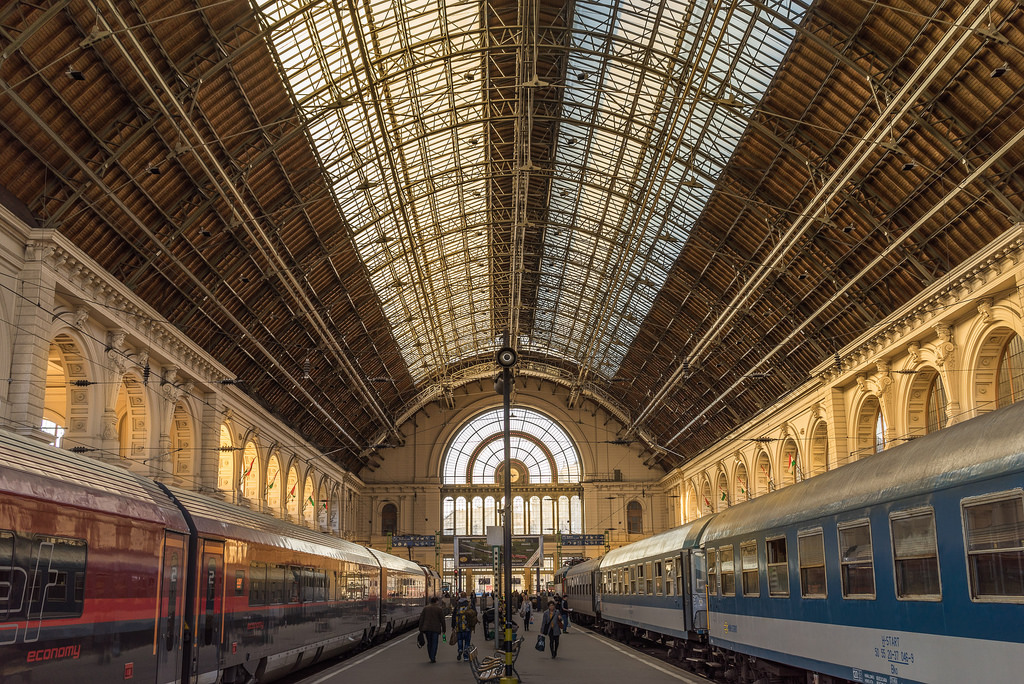
Main railway stations of Budapest
Learn about the main railway stations of Budapest, and popular destinations you can reach by train from the capital.
O
C
Budapest, the capital of Hungary, has three main railway stations (“pályaudvars” as we call them) to serve the needs of domestic and international travelers: Keleti, Nyugati, and Déli railway stations. Although the state of the trains and the reliability of MÁV (Hungary’s state-owned railway services) are often disputed and criticized by citizens, rail transport continues to be a popular choice of travel for both locals and tourists, and it would be unfair to say that the situation hasn’t improved in the past decade. In fact, most of the worn-out, nostalgia-evoking (and infamously inconvenient) trains have been swapped for modern ones on several major service lines (mainly within the capital’s agglomeration but also to some of the most popular travel destinations), and a few years ago, MÁV implemented a long-awaited digital ticket-purchasing solution which is available for smartphones as well.
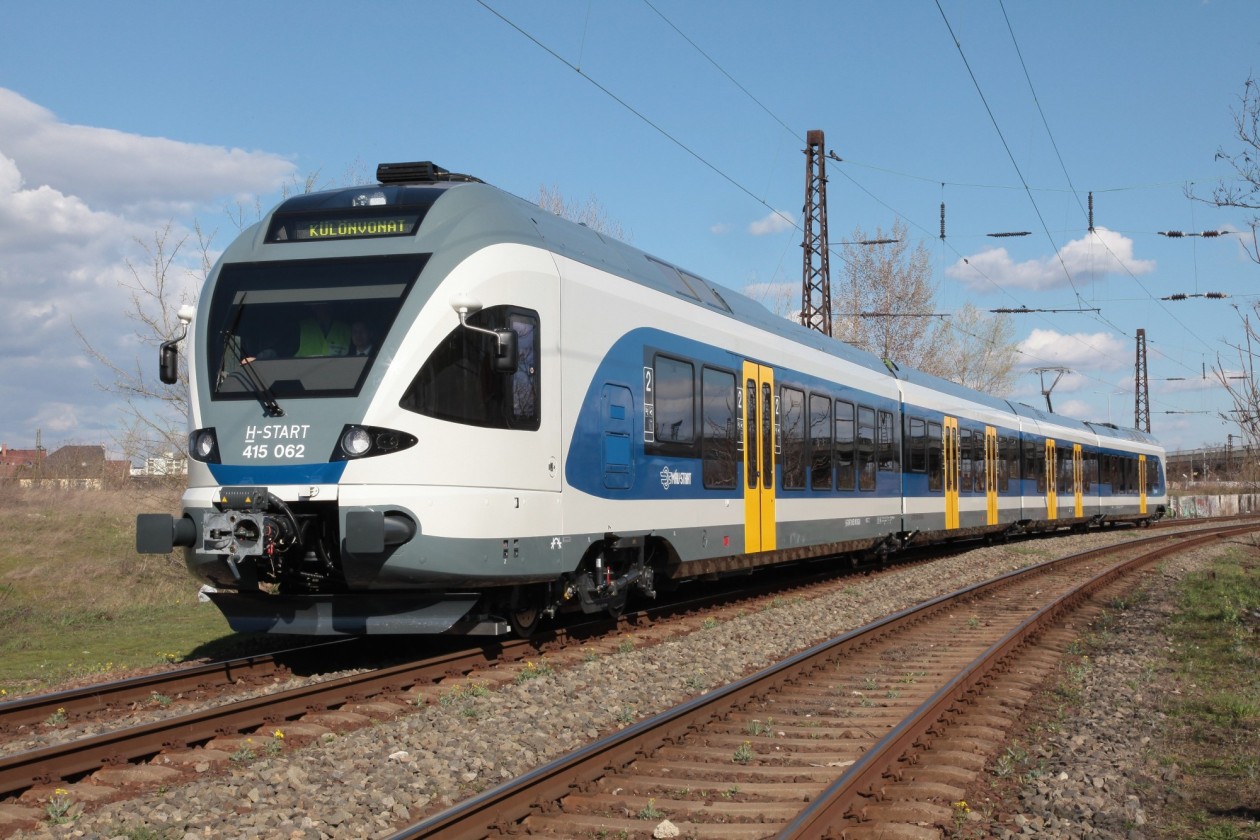
East, west… where’s the rest?
For those planning to visit Budapest, there might come a time (if it hasn’t yet), that you’ll notice the naming convention of Budapest railway stations is somewhat confusing: it appears logical and outright helpful at first, but as you dig into the routes and destinations, it’ll start making less and less sense by the minute. Let us spare you the headache that even a lot of city dwellers experienced at some point and clarify: even though the names of the three main stations mean Eastern, Western, and Southern, they do not describe where in the city the stations are located. Instead, the city’s first railway station, Déli pályaudvar, was named after its owner, the Déli Vaspályatársaság (Austrian Southern Railway Company), whose name denoted the direction towards which they operated train services; and after that, each station got its name from the direction it dispatched trains to. Nevertheless, you won’t find a railway station called “Északi” (Hungarian for “northern”), even though there are plenty of northbound railway services from Budapest – only they depart from the Nyugati or Keleti railway stations. Although this direction-based distribution is no longer strictly in place, the railway stations have kept their names to this day.
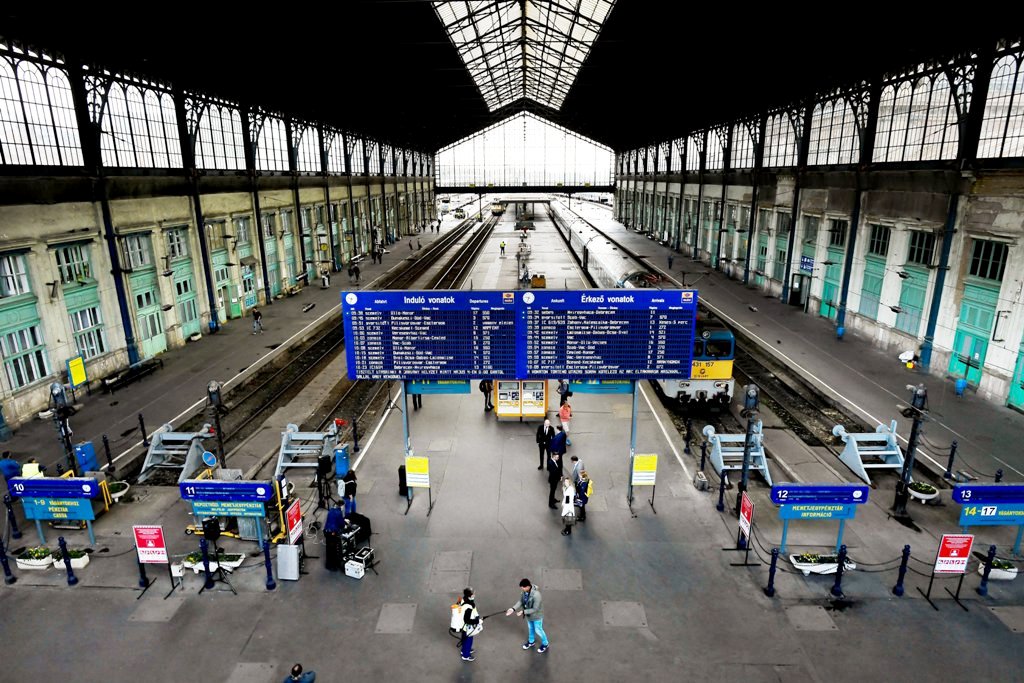
Keleti railway station
Before aviation took over as the preferred means of international transport, when the railroad industry was booming, passengers arriving in the city were greeted by railway stations. For that reason, they were designed to fill incoming travelers with awe. Being a city often praised for its stunning, diverse architecture, Budapest does not fall short of impressive railway stations either – and Keleti pályaudvar is a prime example of that.
Built in 1884, Keleti pályaudvar was considered the most modern railway station of Europe at the time. Today, it is the main international and intercity railway terminal of Budapest and is therefore the busiest of the city’s main railway stations; trains depart from here to nearly all of Hungary, as well as Austria, Germany, Slovakia, the Czech Republic, Romania, Croatia and Serbia.
Location: Keleti railway station
How to get here: Keleti pályaudvar has two direct metro line connections, M2 and M4, making it easily accessible from anywhere in the city. There are also numerous bus and tram services that stop or terminate at Keleti.
Tip
Keleti is a 5-minute walk from one of the biggest shopping malls of Budapest: Aréna Pláza.

Nyugati railway station
Although the competition is tough between the Nyugati and Keleti railway stations, when we look at their appearance, Nyugati probably takes the cake. Designed by August de Serres and built by Gustave Eiffel’s company, the iron and glass structure of the terminal’s façade leaves millions of tourists breathless to this day. To top it all off, right next to the station is a lovely little park called Eiffel tér, offering people a selection of bars and restaurants, as well as the chance to sit and relax in a pretty green area in an otherwise traffic-heavy location.
The station provides railway services to multiple cities and regions northbound, such as Esztergom, Veresegyház, and the Danube Bend, but also in other directions throughout the country, such as Cegléd, Szeged, and Nyíregyháza.
Note
On May 8, 2020 Nyugati pályaudvar was closed due to renovation works which are expected to last 7 months. During the time of the renovation, the railway station is closed.
Location: Nyugati railway station
How to get here: Nyugati pályaudvar has a direct metro connection on line M3 which runs across Budapest vertically, and is also on the line of tram 4-6, making it easily accessible from both Buda and anywhere in central Pest.
Tip
Nyugati is located right next to Westend City Center, arguably the most frequented shopping mall of Budapest. In addition, you might want to kick back a drink at Zsiráf, one of the coolest outdoor bars of the city, located on Eiffel tér, right next to the station.

Déli railway station
Opened in 1861, Déli pályaudvar was the first main railway station of the country. Sadly, the terminal suffered significant damage during WWII and had to be rebuilt almost from scratch, which is why its façade looks more “modern” than those of the other two main railway stations.
Déli is the second busiest railway station after Keleti. The station primarily serves the southern areas of the Budapest agglomeration, as well as cities in Transdanubia. In the summer, the number of passengers rises dramatically, as Déli is the number one railway station serving the Balaton region, which is a popular holiday destination for Hungarians and tourists alike.
Location: Déli railway station
How to get here: Located on the Buda side of town, Déli pályaudvar is one of the terminuses of metro line M2. It can also be reached by several tram and bus services that run across Buda.
Tip
Although the station itself is not exactly an eye candy like the other two, a few minutes of walk from Déli pályaudvar is a large park where you can kill time in the soft lap of nature before you need to catch your train.

Q & A
- How many railway stations does Budapest have?
- Budapest has three main railway stations to serve the needs of domestic and international travelers: Keleti pályaudvar, Nyugati pályaudvar, and Déli pályaudvar.
- Which countries can I travel to from Budapest by train?
- Serving as the main international and intercity railway terminal of Budapest, Keleti railway station frequently departs trains to Austria, Germany, Slovakia, the Czech Republic, Romania, Croatia, and Serbia.
- From which countries can I travel to Budapest by train?
- Budapest is easily accessible by train from Austria, Germany, Slovakia, the Czech Republic, Romania, Croatia, and Serbia.
Related Articles
-
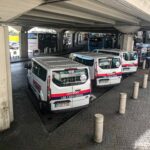
Budapest Airport Parking
-
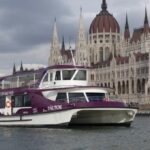
Your ultimate itinerary to exploring Budapest in 1, 2 or 3 days
-
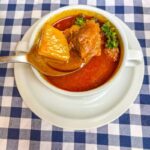
Hungarian Goulash – Enjoy The One and Only Soup!
-

Drinks with a view – the best rooftop bars in Budapest
-

Chicken paprikash – a staple food of Hungarian cuisine in its own right
-

Best places to buy your grocery in Budapest
More interesting and useful tips
If you are interested in the methods of getting to the city from the airport, we recommend reading this article about the Budapest airport transfer choices.
Parking Budapest – check out our article on this topic to avoid fines and find the best parking spots, even for free.




Your experience is important.
Anything you have not found?
Ask a Question
Please log in to write a review.
There is no review yet.